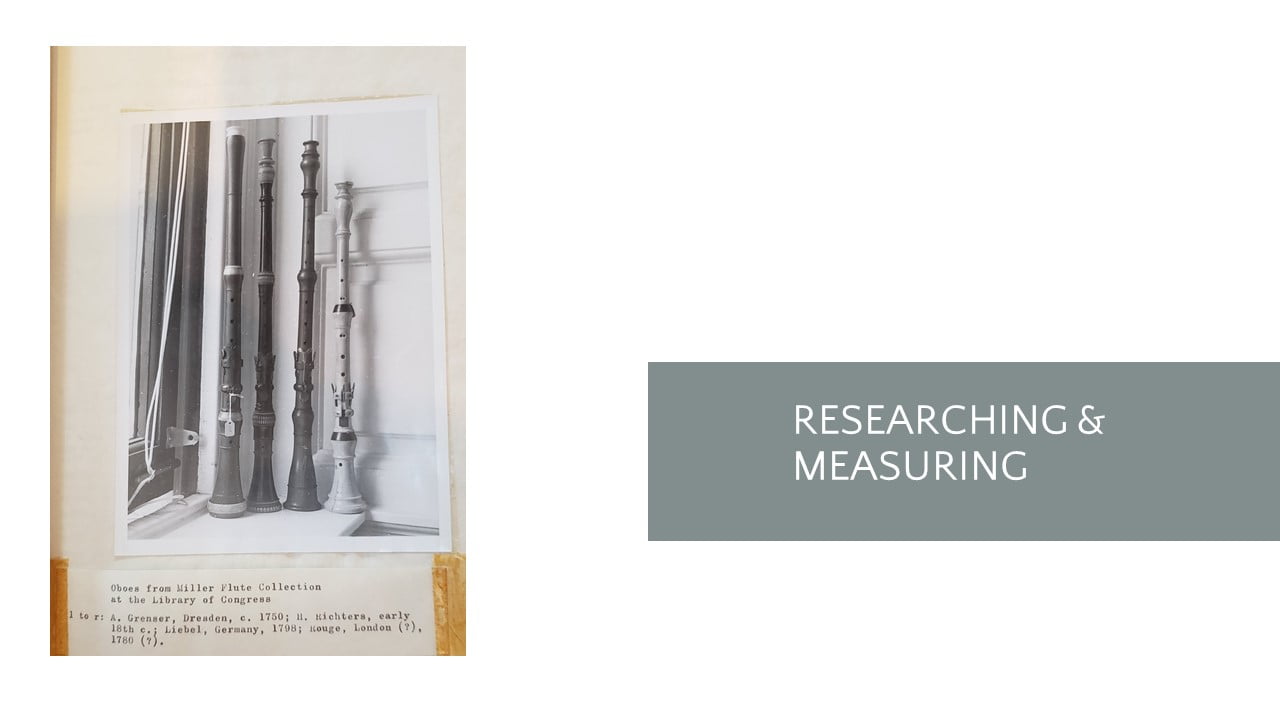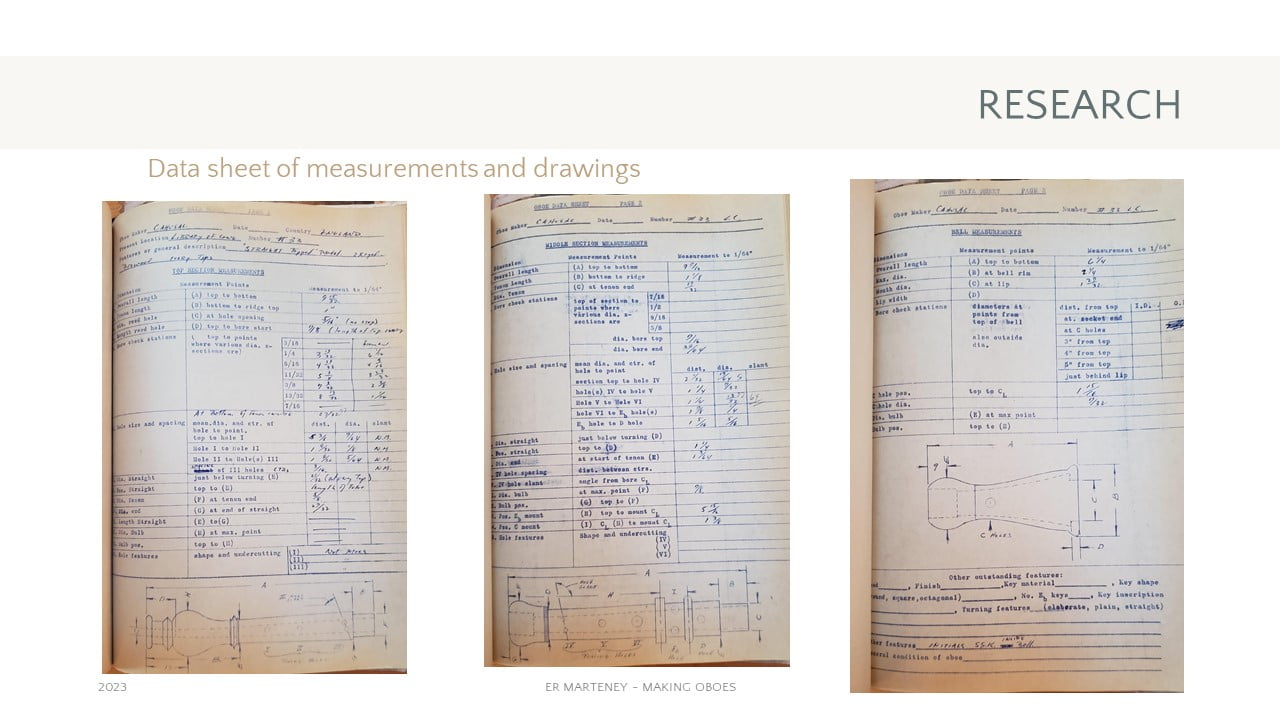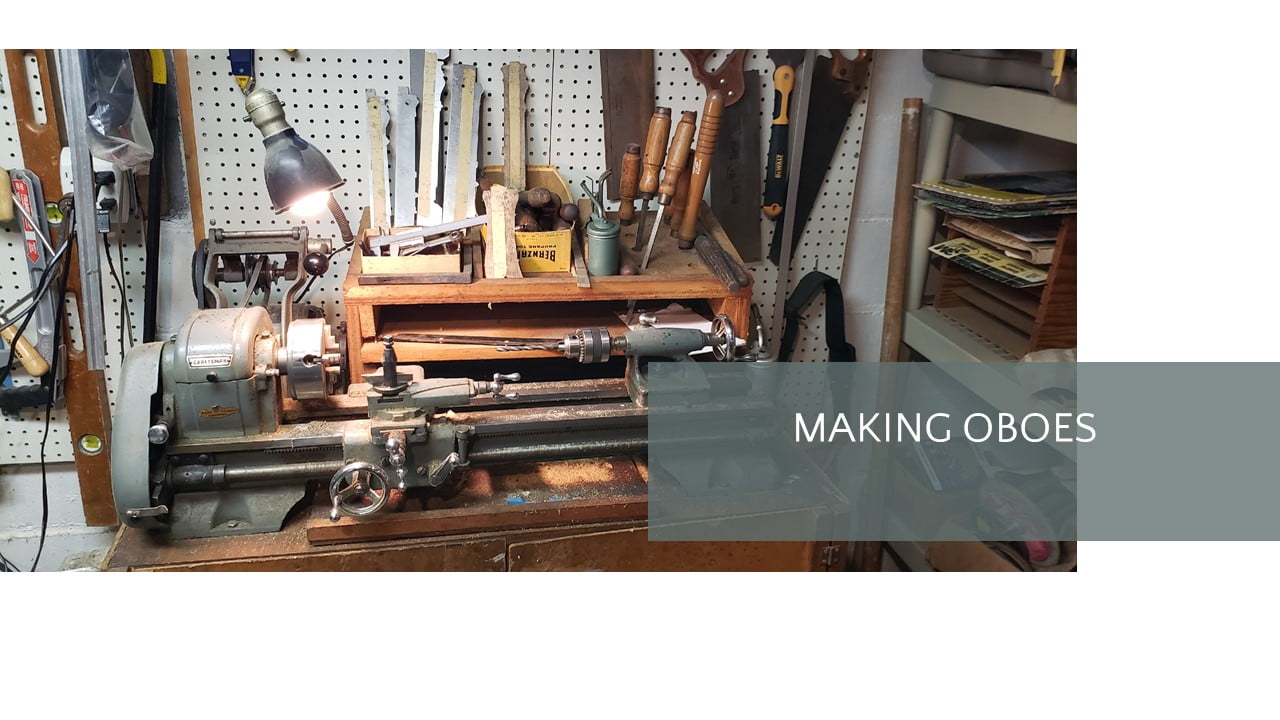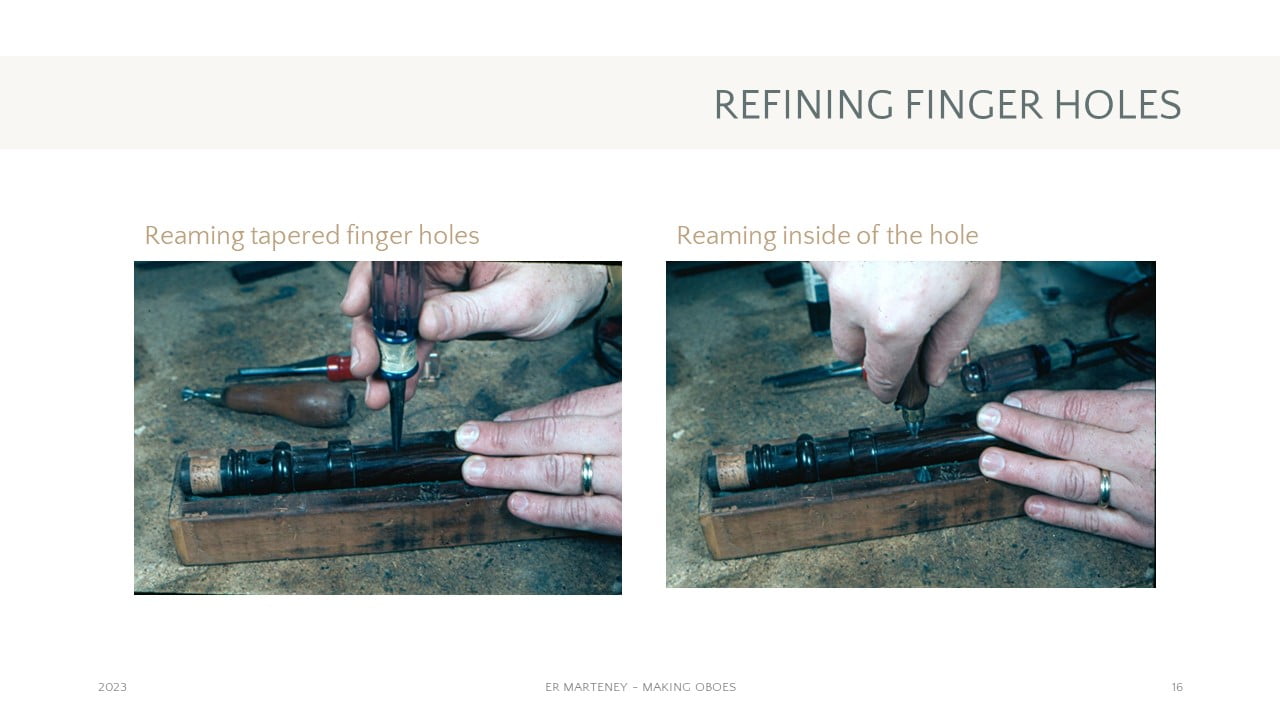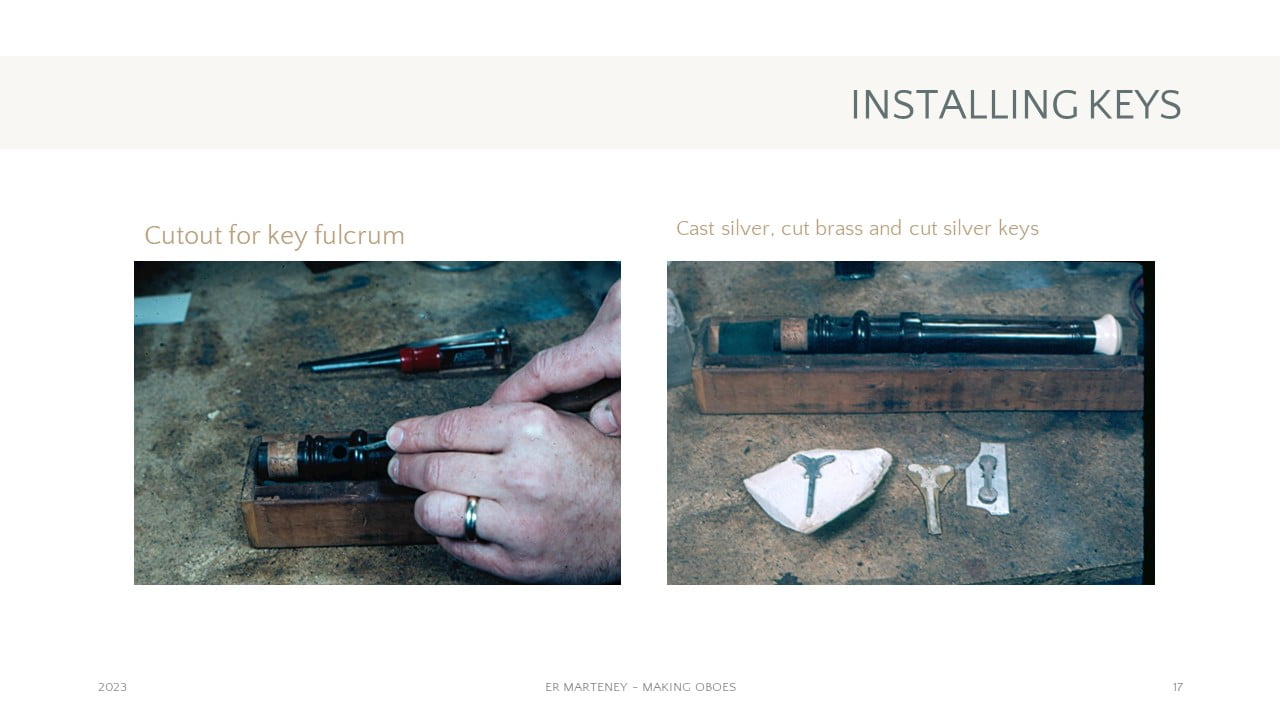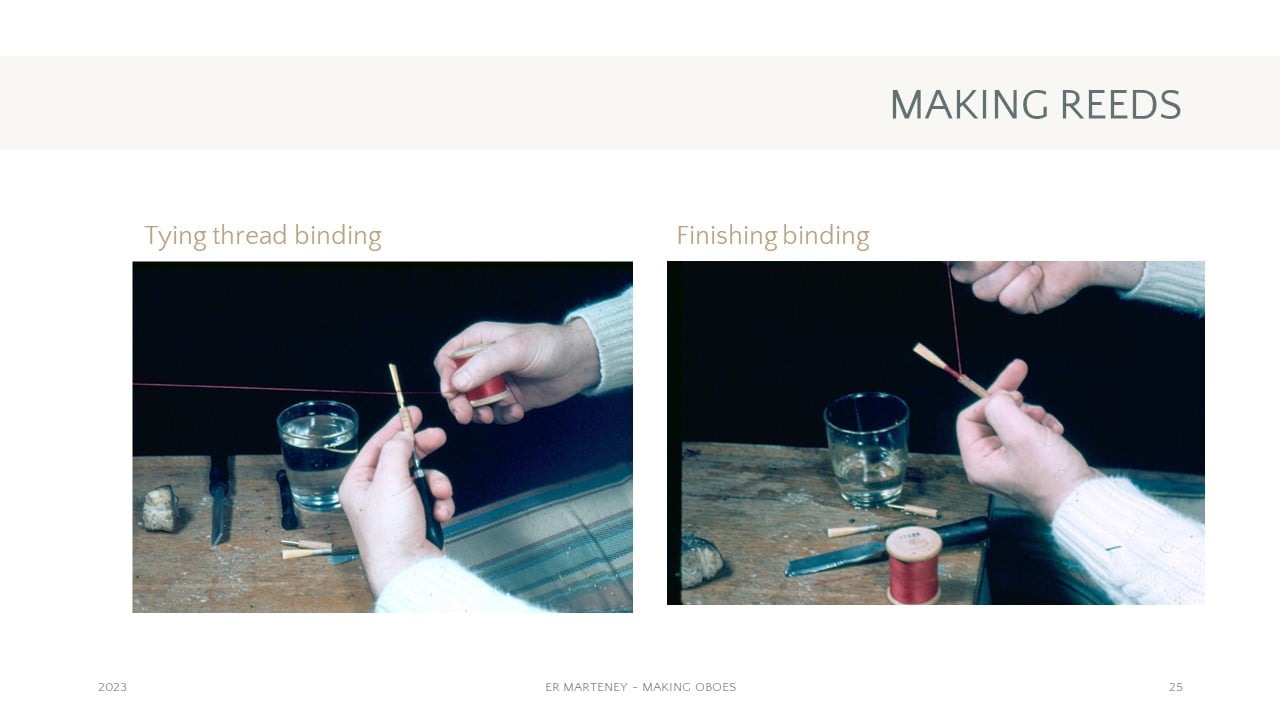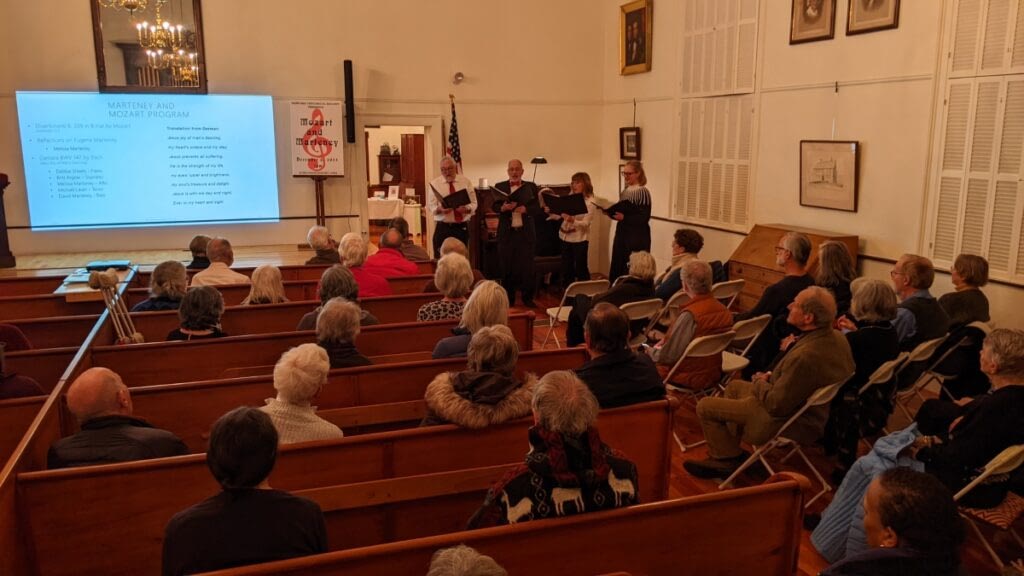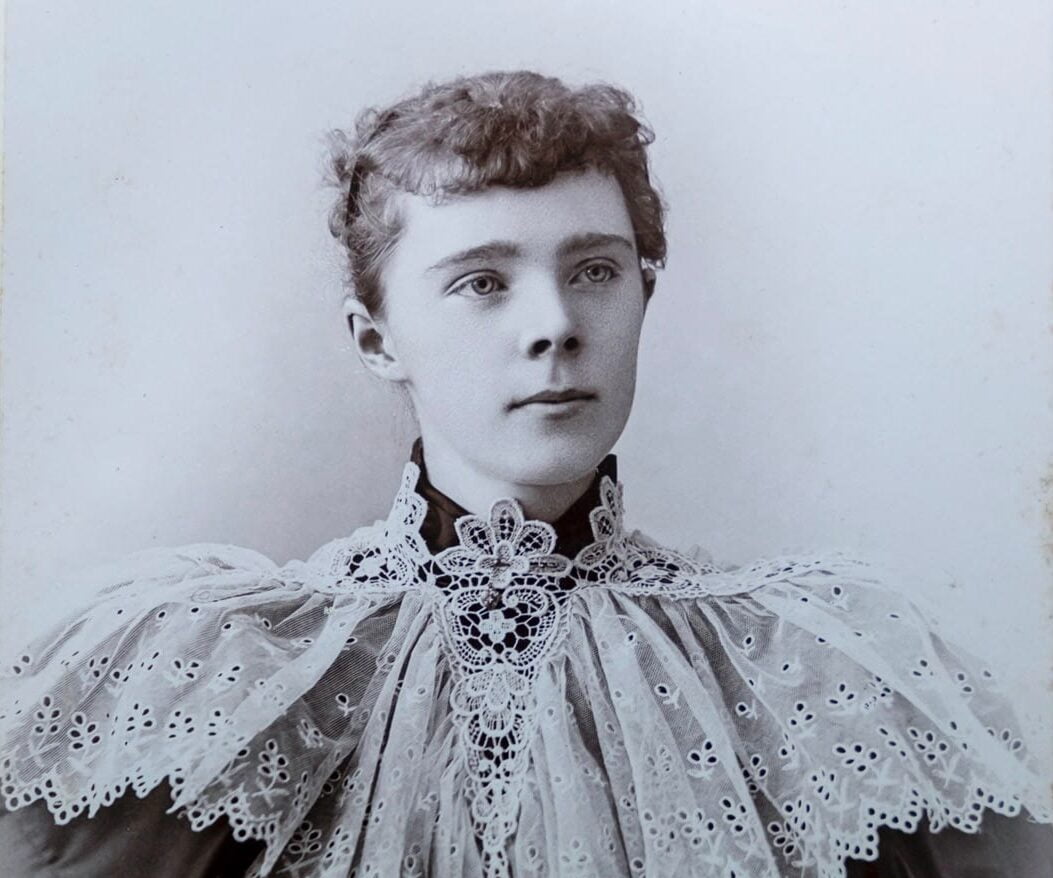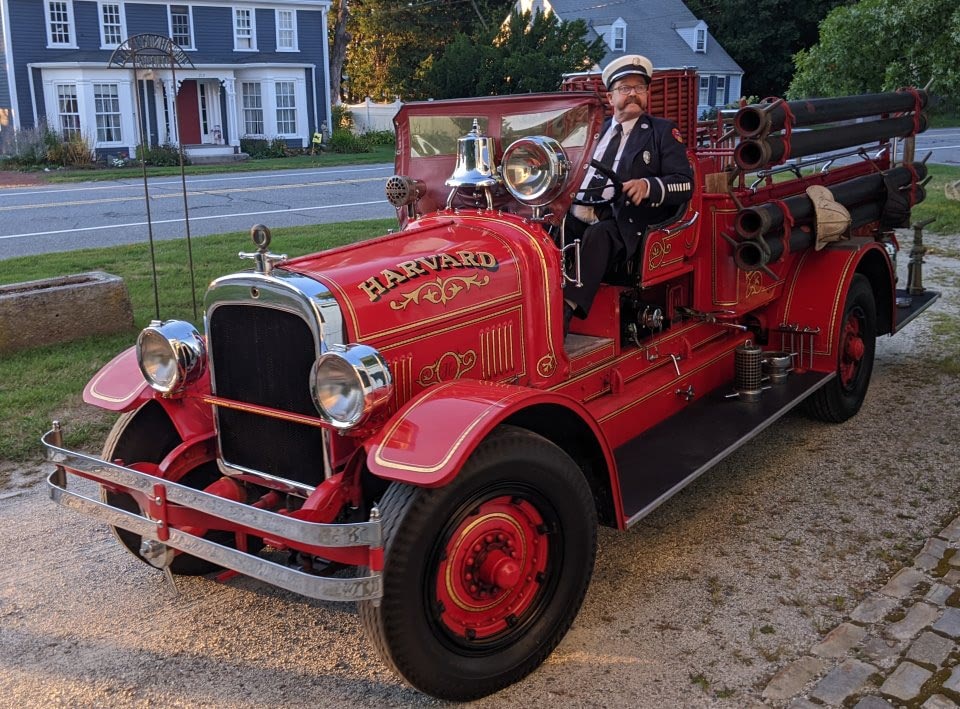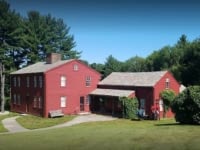Mozart and Marteney Program and Annual Meeting
Annual meeting of the HHS at 7 pm, followed by a Musical Program at 7:30 pm.Was on
Wednesday December 6, 2023
Mozart and Marteney A Musical Program
The Harvard Historical Society held its Annual Meeting on December 6, 2023, at 7:00 p.m. at the Still River Meetinghouse, followed at 7:30 for our Mozart and Marteney Program. The program started with a brief slide show displaying the methods and processes used to make Mozart-era reproduction oboes by Eugene Marteney, a longtime resident of Harvard until his passing in 2008. Mr. Marteney went to painstaking measures to create historically accurate late 18th century oboes.
One of his reproductions was purchased by The Smithsonian for use in playing period music with authentic sound! After the slide show, a woodwind trio and a choral quartet will performing music from Mozart and Bach. There will be delicious refreshments afterward, also honoring the love of chocolate and German wine, enjoyed by both Mozart and Eugene Marteney. Some of the tools and pieces Mr. Marteney used and some of the musical instruments will be on display as well.
Eugene played oboe, the English horn, and oboe d’amore with the Concord Symphony, the Merrimack Symphony (Nashua, NH), Thayer Symphony Orchestra (Lancaster), and Symphony Pro Musica (Hudson). Gene was also known in Harvard for being one of the original founders of our Fourth of July activities. He and his wife, Arline, were asked–by way of a summons delivered by then police officer Charlie Waite–to form a committee to plan the Fourth of July festivities as we know them today.
Eugene insisted that the pie-eating contest must be blueberry to make the biggest mess possible! He was an active member of the Harvard Congregational Church for decades. In addition, Eugene was an avid photographer who took many photos around town, including the Colonial Day Parade, the fourth of July activities, and the December 1964 fire that destroyed the 1876 Unitarian Church. Those photos are now part of the Historical Society archives.
Historical Society program features oboe-making, early music, and chocolate
From the Harvard Press, by CARLENE PHILLIPS · FRIDAY, NOVEMBER 24, 2023
A special program, “Mozart and Marteney,” will follow the business part of the Historical Society’s annual meeting, Wednesday, Dec. 6, at the meetinghouse, 215 Still River Road. The public is invited to attend the entire evening, starting at 7 p.m., or to come for the concert only, around 7:30 p.m. The Marteney part of the program is the story of how Harvard resident Eugene Marteney became a 20th-century pioneer in making replicas of 18th-century oboes. The oboe is one of the instruments featured prominently in the classical works of Mozart, one of Marteney’s favorite composers.
David Marteney will present a slideshow describing the steps and tools his dad used in recreating a Baroque hautboy (from hautbois, “high wood,” pronounced o-boy), precursor to the modern oboe. Finished oboes and some of Gene’s tools will be on display for the program. Flutist and society board member Claire Rindenello has selected works of Mozart and Bach to be performed by a woodwind trio, including, of course, an oboe, and a choral quartet. She said that a year ago, when she saw Gene’s large collection of music, finished oboes, pieces, and tools, “I felt like it was Christmas. I felt like I was opening a treasure chest.”
In a recent conversation, David said his slideshow is the very one Gene himself was planning. After their father’s death in 2008, David and his sister found multiple boxes of his slides and photos; one of them held a set of slides on reed-making and another documented the process and tools Gene used in making oboes, both the Collier and Milhouse types, styles manufactured in the 1700s. David said his father knew that if you had the exact measurements of a Baroque oboe, you could create a replica.
To get those measurements, Gene spent time doing research in the Boston Museum of Fine Arts’ instrument collection, other collections in the U.S., and places in Europe, notably Vienna. David said once curators saw his father’s enthusiasm and curiosity about this fairly obscure subject, they were happy to let him into back rooms where the public was not generally allowed. From pictures and precise measurements of everything from the distance between keys to the thickness of the wood, Gene would make a template of a hautboy. “He was an engineer,” David said. “He took it as an analytical problem” to solve. And, as with so many other things that Gene was interested in throughout his life—from sound systems to circuit chip design to long-distance biking—he jumped into oboe-making “with two feet.”
David remembers that as a young boy he would watch his father working in his shop on Tahanto Trail at the Craftsman electric lathe that he had purchased from Sears, which, because it was usually used on metal, cut very precisely. David would see the wood shavings, often of the rare rosewood or of boxwood, peel off the machine and smell the ozone from the motor. When Gene needed a tool, he would use the lathe to make it. Gene repaired and made oboes starting in the early 1960s.
By 1969 there were others making early oboes, and Gene, having already played a major role, turned his full attention to his highly technical job in the sound department of General Radio and to his family. He would continue to sing and to play the oboe in various community orchestras.
The path to hautboy-making
Gene had always been interested in classical music, and Mozart in particular, perhaps feeling a stronger connection because his birthday was the day before Mozart’s. David said that early music was always playing when he was growing up. In the 1950s, Gene, a scientist and engineer, was in Boston pursuing a Ph.D. in philosophy. His mother had taught him piano, but now he became more intrigued by the sound of the oboe—which has been described as the most beautiful and versatile instrument in the orchestra, a penetrating sound that is able to carry the melody—and he took lessons. In playing music from the Baroque and Classical periods, he became fascinated by what the oboe might have sounded like in the period of Mozart. An online article describes the sound of a Baroque oboe as “less compact and more plaintive” than that of a modern oboe.
He began to repair antique oboes and embarked on the research he needed to experiment with making a hautboy. A friend who made recorders recommended Gene when the Smithsonian was looking for someone to repair an antique oboe. The museum then commissioned Gene to make a replica of the original so that the museum could protect the original from damage.
Gene’s interest had coincided with the mid-20th-century resurgence of interest in original instruments, in the sounds as heard in Mozart’s time. According to a 2022 article in Early Music magazine by musicologist Robert Howe, when the early music movement occurred, replicas of antique instruments were built. Since the hautboy was the primary woodwind instrument of the Baroque and early Classical orchestra, early woodwinds were in demand. But Baroque woodwinds were problematic. Using antique oboes would inevitably cause deterioration, and repairs needed to be made. Replicas of early oboes made in Germany lacked detail features and because they used modern reeds, the sound was not authentic. Howe writes, “It was largely Americans who initiated the idea that it was better to replicate than to repair old instruments.” Gene, whom Howe calls “a forgotten pioneer,” was “the first person to make hautboys as replicas rather than in modern form.” Eugene Marteney was “a pivotal figure in the 1970s renaissance of hautboy-making,” writes Howe.
Performing Mozart and Bach
Rindenello has chosen Mozart’s Divertimento in B-flat major, to be played by a woodwind trio. The piece, composed in 1772, would have been written as popular music, meant to entertain.
Michael Jacobs will play clarinet and Rindenello will be on flute. Henry Turvo, who teaches at Groton Hill, will play the oboe, not, however, an early one from Gene’s collection. The oboe, partly because of its small double reed, is one of the most difficult instruments to play, and an early one would be even harder and have a different timbre, or tone.
A second piece is Bach’s Cantata BWV 147, which Rindenello chose because “not only is it beautiful, but people enjoy hearing something they know.” Debbie Sheets will be the piano accompanist to the voices of Harvard residents Britt Argow, Melissa Marteney, David Marteney, and Michael Lauer.
Refreshments will follow the program. Since a further connection between Marteney and Mozart was a love of chocolate, there will be some decadent offerings like chocolate bourbon balls and chocolate cookies with chambord-soaked cranberries.
More Historical Society Events, past and present...






